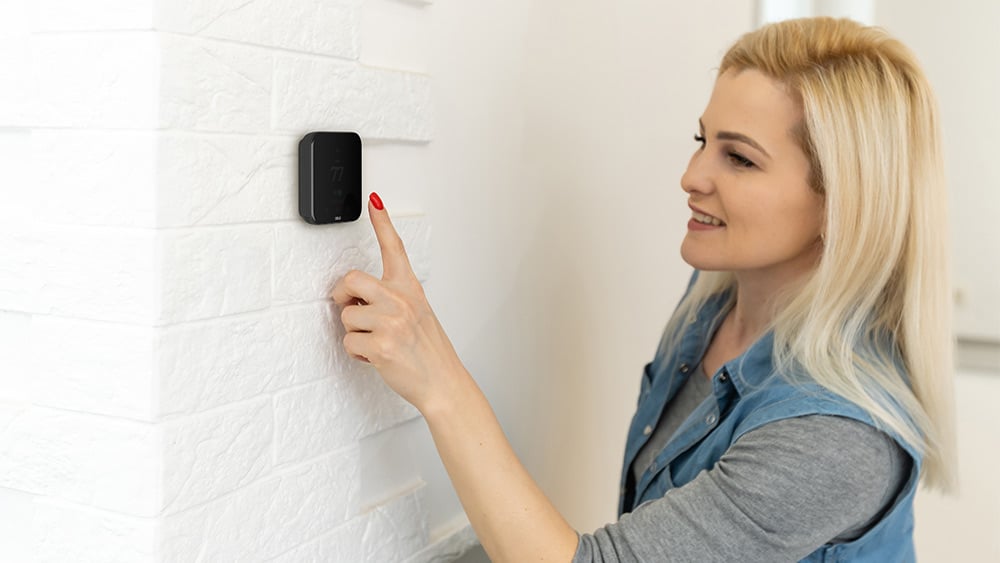
Buying the perfect thermostat for your home can seem like a daunting task, especially if you don’t know the basics. But don’t worry – with this beginner’s guide to thermostat buying, you’ll be able to make an informed decision that’s perfect for your home.
With a seemingly endless array of features and options, it can be difficult to know where to start. Here, you’ll learn all about the basics of thermostats and the various options available so you can make an informed decision and find the best thermostat for your needs.
Thermostat Buying Guide for Beginners
A thermostat is an essential equipment used to regulate your home’s temperature. When it’s time to buy a new thermostat, you want to make sure you pick the right one for your needs. Here’s an essential guide to help you make the right decision.
First, consider the thermostat you need. Digital thermostats are generally easier to use and provide more control over the temperature than manual ones. They also offer a range of additional features such as programming, motion sensors, and the ability to control the temperature from your smartphone remotely. Manual thermostats are typically less expensive and don’t require any batteries or wiring.
Next, you’ll want to think about the installation process. Most digital thermostats come with instructions and can be installed yourself, while manual thermostats usually require a professional installation. If you’re uncomfortable installing either type of thermostat, you require the IO HVAC control thermostats or contact a local HVAC specialist for help.
Once you’ve chosen the type of thermostat, consider the features that best suit your needs. Do you want a programmable model to set different temperatures throughout the day?
Do you want a model with a motion sensor or one that can be remotely controlled via smartphone? Knowing what features you need in a thermostat will help narrow your options.
Familiarize yourself with how to use your thermostat correctly. Many models have different settings for different seasons or times of day, so ensure you understand how to adjust the temperature accordingly. You should also read the instruction manual thoroughly before use to ensure you know all the features and functions of the thermostat.
By taking the time to understand the basics of thermostat buying, you can ensure that you purchase the best model for your home and family. With this guide in mind, you’ll be ready to select the perfect thermostat for your needs!
Consider the thermostat type that best suit your needs
When it comes to selecting the right thermostat for your home, there are many different options available. Understanding the basics of each type will help you make an informed decision on the best fit for your space. The most common types of thermostats are mechanical, digital, and programmable.
Mechanical thermostats are the most basic option and have been around for a long time. They are relatively inexpensive and easy to install. Options like Veris thermostats typically use a lever or dial to adjust the temperature settings manually. The main disadvantage of mechanical thermostats is that they are not very energy efficient and can be inaccurate.
Digital thermostats offer more control over the temperature settings than mechanical thermostats. These devices can be programmed to automatically adjust the temperature throughout the day.
Digital thermostats are more energy efficient than mechanical thermostats and provide greater accuracy in terms of temperature regulation. However, they are usually more expensive than mechanical thermostats and may require professional installation. The ecobee thermostats are a good example of this type of thermostat.
Programmable thermostats offer the most flexibility when controlling the temperature settings in your home. They are usually digital thermostats that allow you to customize a schedule that can regulate the temperature of your home, depending on whether you’re at home or away. Programmable thermostats are usually the most expensive option but are also the most energy-efficient.
The installation process
With the right tools and preparation, you can get your new thermostat up and running in no time. Here are the steps to follow when installing your thermostat:
1. Shut off power to the furnace or air conditioner unit by turning off the circuit breaker.
2. Remove the old thermostat. First, remove the cover from the wall, unscrew the thermostat base, and gently pull out the wiring.
3. Connect the new thermostat wires to the furnace or air conditioning unit’s wiring. Connect each wire to the correct terminal according to the manufacturer’s instructions. Make sure that all of the wires are firmly connected.
4. Attach the base of the new thermostat to the wall using screws or adhesive strips.
5. Reinstall the cover plate and secure it with the screws provided.
6. Turn the power to the circuit breaker’s furnace or air conditioner unit.
7. Program your new thermostat according to the manufacturer’s instructions, setting desired temperatures and times for cooling or heating.
What are some other features to look for in a thermostat?
When selecting a thermostat, you should consider additional features such as programmability, motion sensing capabilities, humidity control, energy-saving settings, digital displays, remote access, your home’s climate, the type of heating system you have, wireless connectivity, and voice control capabilities. Be sure to do your research before purchasing to ensure you choose the best model for your needs.
Programmable thermostats allow users to schedule temperature changes throughout the day or week, while motion-sensing capabilities can detect when a room is empty and turn off the air conditioning or heating system. The KMC thermostats brand can help set humidity control and maintain comfort levels by balancing out humidity levels in a home.
Energy-saving settings allow users to save money on their energy bills by adjusting temperatures at specific times of the day. Digital displays provide easy-to-read information, while remote access and voice activation allow users to control their thermostats without leaving their chairs.
Conclusion
When you’re purchasing a thermostat for your home, you’ll want to consider your budget, the size of your home, and what features are important to you. You should also consider the installation process, as it can be daunting if you aren’t familiar with how it works. By doing these things, you can ensure that you’ll be able to pick out the perfect thermostat for your home.
If you have any questions about the installation process, consult an expert! A licensed HVAC technician can help you ensure that your thermostat is properly installed and functioning correctly







